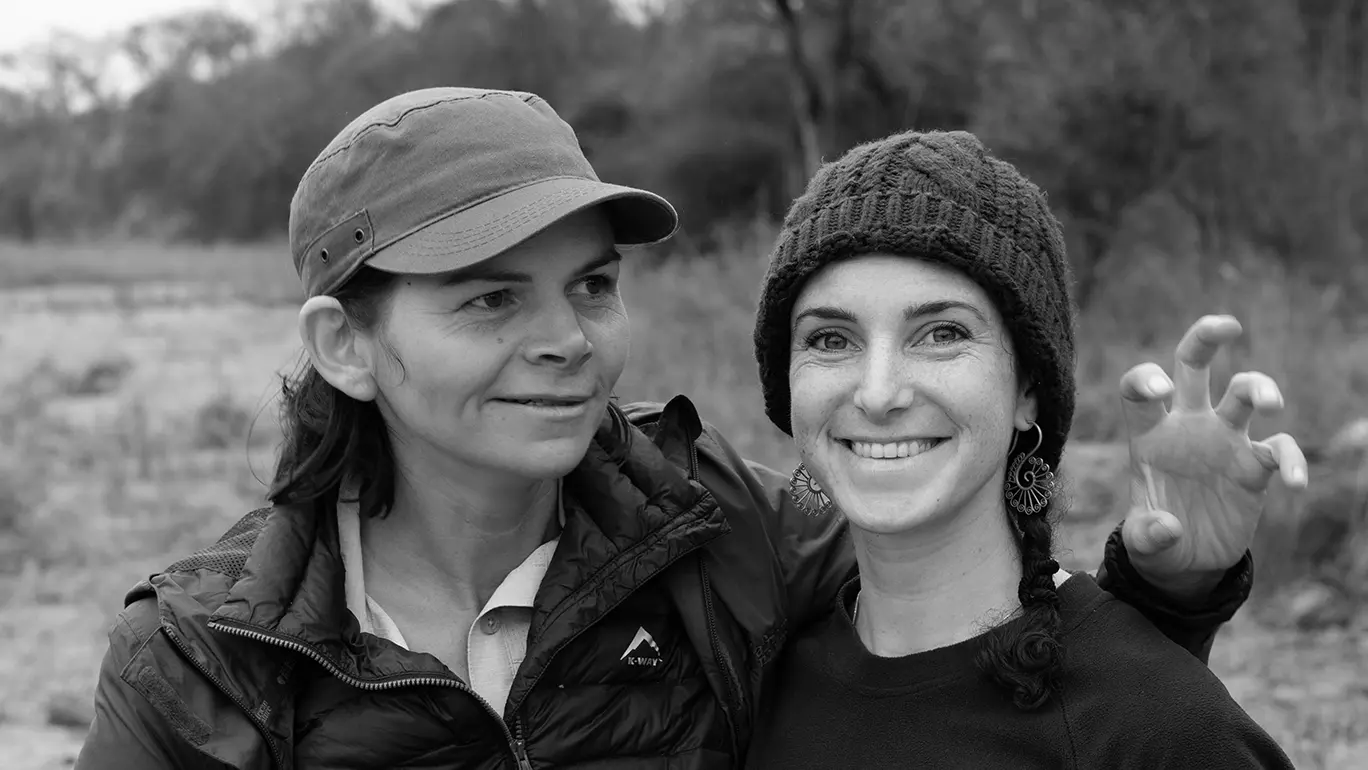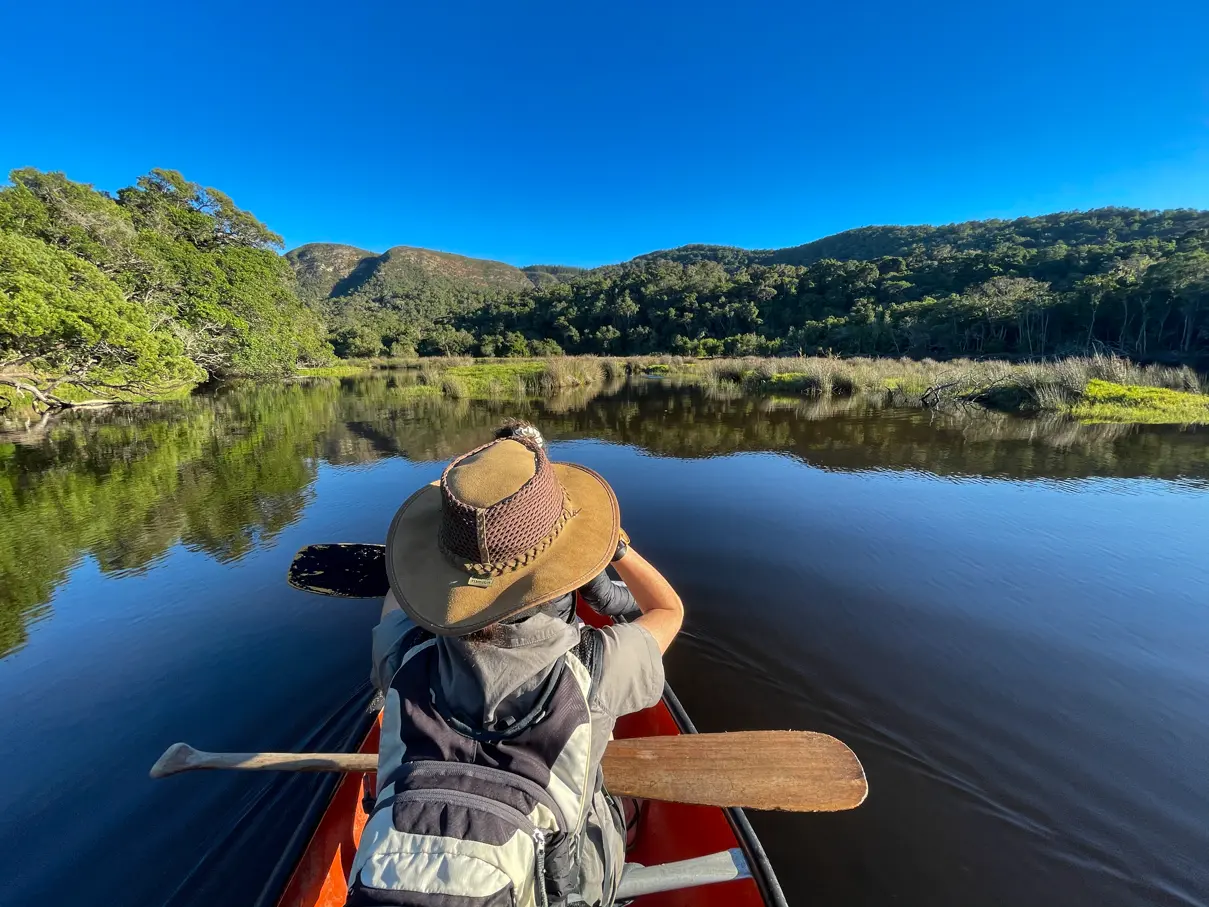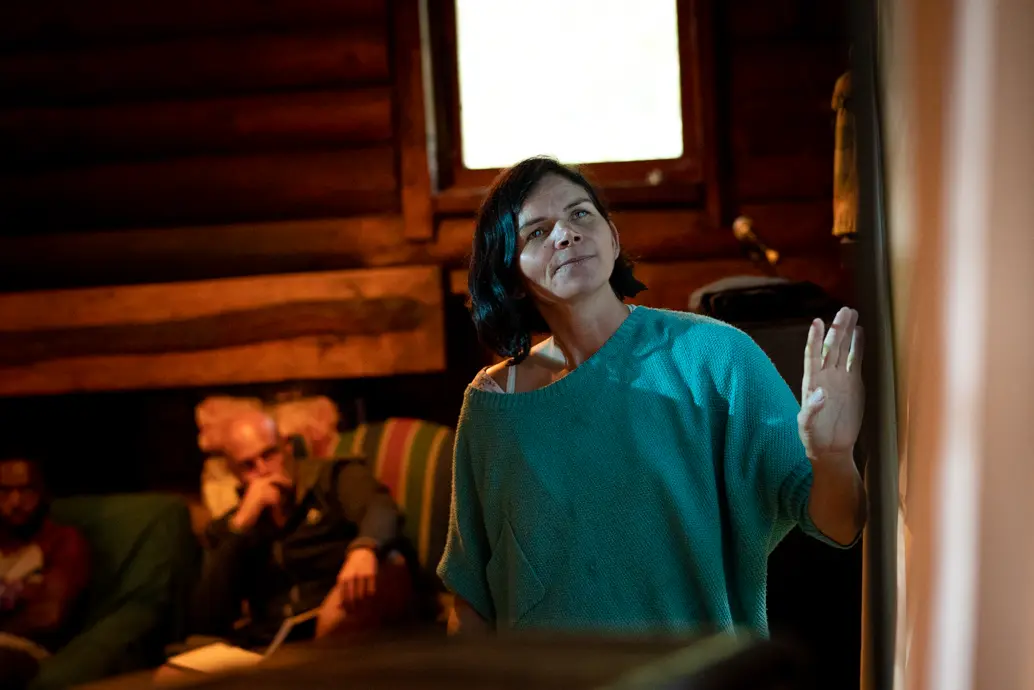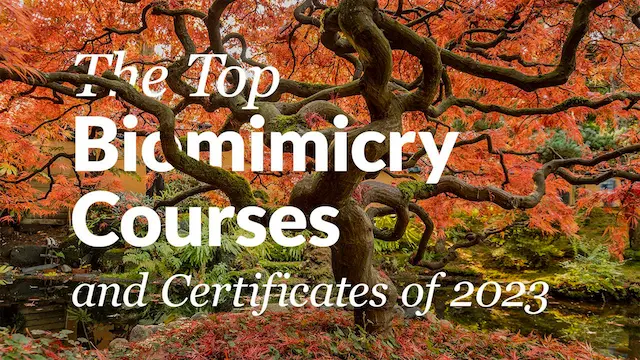Biomimicry Jobs and Careers, Explained

What jobs and careers does our future require?
Biomimicry and I believe that the future is not to be predicted, but created.
A better question might be then - what future careers can we create now?
This article dives deeper into creating a career in biomimicry, nature's use designs and strategies applied to a range of fields and how we might design the future of work for the 21st century.
This week I sat down with the Learn Biomimicry course creators who have made biomimicry their profession, Claire Janisch and Jessica Berliner, to find out more.

Claire Janisch and Jess Berliner - Kruger National Park 2020
Is biomimicry a career or methodology?
Biomimicry is both a methodology and a career. It's a profession for me because I made it my profession, but that took a lot of time and energy, training and learning. Biomimicry doesn’t need to be your profession to act on it. The beauty of biomimicry is that anyone can start applying biomimicry as a methodology tomorrow.
Biomimicry training functions as a bridge between different disciplines. It gives you a language to integrate different fields together. It really is just this incredible way to shift any ‘career’ because you can take biomimicry and shift the way that you design. Careers are often seen as silos where the future is really more like overlapping layers of knowledge.
Biomimicry Job Opportunities
Biomimicry has the potential to become a career for many more people, though more practically I wish that every career could have biomimicry integrated within it - ensuring it is as practical as possible.
If we are to ask how does the world shift towards creating conditions conducive to life - we know that we have to reinvent entire economies, redesign systems and rethink entire disciplines and fields.
We should not ask “how do we fit biomimicry into our discipline”, but rather “how will our discipline shift as we integrate biomimicry”?
We need to ask hard questions such as “What is life” and “what does it mean to create conditions conducive to life in our designs”? What does it mean to be alive?
We need to remember that life is the priority here and not the things we’ve overlaid as important. Do we need another Industrial Revolution, replacing life with artificial technologies like robots, AI, VR? What if we end up with a world that's devoid of life?
It future is to be defined by our choices, and we choose a regenerative revolution where life is prioritised, nature and the systems that sustain life are nourished and restored, and technologies we choose to create (not just react to) are supporting the systems of life itself.
The Ethos of creating conditions conducive to life is the aspect of biomimicry that most need to be integrated into the systems of our world - if it means re-inventing our disciplines, creating new careers, that’s what matters.
Biomimicry is not just a tool to integrate into your career and continue business as usual. Biomimicry can shift the nature of careers - think ecological engineering, regenerative built environments, ecosystem restoration, holistic land management, and so much more...
> Interested in learning about existing career opportunities? Check out these bioinformatics remote job vacancies

How to Become a Biomimicry Professional
Claire, you've charted your own path and a very distinct and different path for over 10 years before becoming a Biomimicry Professional. Could you give us a brief summary of the key decisions that led you to where you are today in your career?
“I remember some life-defining moments that led me to make the choice towards biomimicry as a profession. The first defining moment was when I was studying chemical engineering.
I was standing in the middle of a huge, big chemical plant that was very destructive to the environment. It was smelly and gross, with effluents and gases that were toxic to the environment, as well as hazardous to the humans working in the plant - yet it was making fertilizer (to nourish soil - apparently to sustain life?).
I stood in the middle of that and thought, you know, chemical engineers are supposed to be very intelligent, why then are they making such a mess? It was so devoid of life, that all my cells cringed at the thought of working in a space like this.
I remember thinking that there had to be a better way. Surely, this isn't the culmination of human intelligence I asked myself. So I looked around for those places that did nourish life - nature itself, real plants, like a forest. I studied permaculture early on, certain that there was a way to apply that kind of wisdom of learning from nature to industry as well.
Also at that moment, I made a fundamental decision to not immediately accept what I was taught as the way to do something in my field of study/work. If we assume that we know the answer, we never have an opportunity to humble ourselves to learn something brand new or open a door to something different and discover new potentials.
I chose to study for a Master's in Chemical Engineering in order to see how to change the field of chemical engineering itself - can we design processes that generate useful things for society - AND which nourish life? Like a forest does for its inhabitants.
Another defining moment was after having worked for a decade following my Master’s degree - practically cleaning up the mess of what chemical engineering processes create, applying waste minimization, cleaner productions, industrial ecology, etc.
I knew that minimising the waste wasn’t enough, we needed to create healthy and life-nourishing processes and recipes for our industries to implement - ones that would leave clean rivers, clean air, healthy soil - like a forest does.
Suddenly when I heard the story of the spider spinning a spider web - tougher than steel, more flexible than nylon - made from life-friendly materials, at the temperature of a cold-blooded spider - it just dawned upon me. Nature creates all kinds of materials, tough, lightweight, etc. all in a life-friendly way. Even nature’s poisons/venom break down into benign constituents.
I knew then that the very place that chemical engineering processes were destroying - natural systems - held the answers to how we could truly generate sustainable materials and processes - if only we were to ask the right questions.
I knew I had to learn biomimicry and apply it to the field of engineering, even architecture, agriculture, and all the design fields influenced by previous industrial revolutions. I didn’t mind if there was no one who would employ me yet, I would learn from and work with whoever did realise the necessity for comprehending and copying nature, and then create the projects that demonstrated it could be done in larger human systems.
Even if it did mean reinventing my career, I was willing to transform and create my own future, a future where I saw all careers being life-nourishing.”

Jess Berliner birding in Natures Valley - May 2021
How to design your career to include biomimicry?
Jess, with regards to a young biomimic-to-be, what advice would you give them to design their career to be future-ready?
"Start where you are. Find what makes you curious, or what excites you, and grow from there. Biomimicry (as a mindset and a methodology) can be applied in almost any field, and there are virtually endless possibilities for innovation and improvement in each one.
This multi-potentiality can be overwhelming at first, which is why we recommend that you 'integrate development with growth' by first applying biomimicry in the field that you're trained in, or in one that you're passionate about.
When tackling a challenge, the most important thing is to first fully understand it – if you're solving problems in your own field, you already have insider knowledge. If you're passionate about what you're working on, it means that you will be fuelled to keep improving and innovating in your practice. Biomimicry is a practice, the more you do it, the more it'll become ingrained in the way that you do things.
Start with reframing the questions you’re asked. Instead of asking are you going to be future-ready, ask if the future is ready for you? 'The future' is not this predetermined, inflexible thing, it is a series of decisions that we collectively make in the present. Biomimicry embraces the idea that 'the best way to predict the future is to create it'. So, what is the future that you wish to create? Have an open mind, and why not embrace the opportunity to design a world where all of life can thrive?"
Biomimicry Jobs and Careers - Key points and summary
- Biomimicry is both a mindset and methodology and can be integrated as a key tool within any career
- Biomimicry offers
- a bridge between different disciplines enabling you to work in collaborative teams
- an ethos that is essential to integrate into all career fields
- a practice that can be deepened over time until you can make it the speciality of your career, or the focus of your profession
- Instead of asking how you can choose a career that will ensure you are “future-ready”, ask if the future is ready for you - what does the world need and how can you co-create the future you choose?
- Biomimicry provides the adjacent possible - a portal of possibilities led by 4 billion years of nature’s experience - a vast pool of genius and wisdom to tap into and expand the possibilities for innovation within our careers or to our fields of work themselves
- A career in Biomimicry is possible and many practitioners in the world are needed, though it still stands as largely uncharted territory and set for the more inspired and adventurous among us

Claire explains the Biomimicry Life's Principles in her presentation.
Thanks for reading, if you're interested in starting your learning journey, you can learn more about our biomimicry courses here.
Wild regards,
Alistair Daynes, Biomimicry Practitioner

